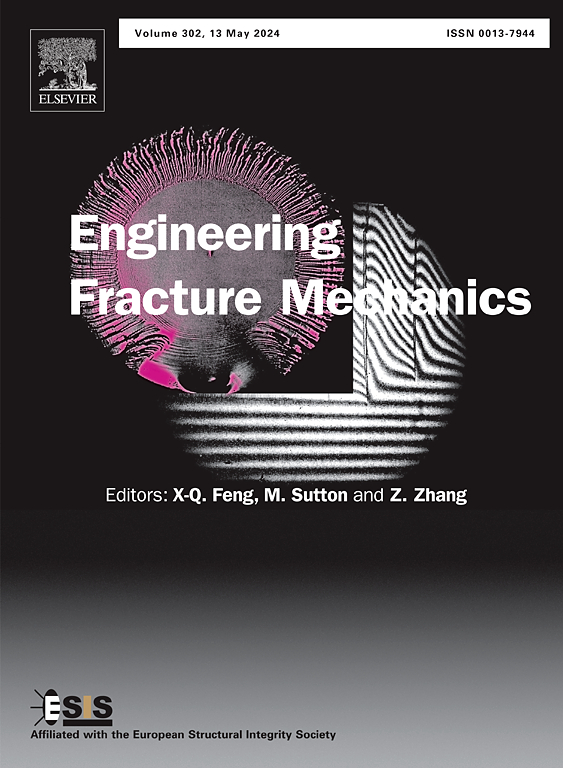Recognition of the cracking pattern of reinforced concrete due to 3D non-uniform corrosion under vertically varying marine exposure conditions
IF 4.7
2区 工程技术
Q1 MECHANICS
引用次数: 0
Abstract
Cover cracking of concrete structures due to reinforcing corrosion is a crucial indicator of deterioration in their mechanical properties and plays a key role in corrosion diagnosis. Despite extensive research on two-dimensional (2D) non-uniform corrosion on cross-sections, there remains a significant gap in simulation models that capture its longitudinal variations on steel reinforcement. This limitation significantly hinders the accurate identification of crack patterns and the subsequent determination of corrosion conditions, especially under vertical variations in marine exposure conditions. This paper thereby presents a newly developed three-dimensional (3D) multi-peak Gaussian model capable of representing temporal non-uniform corrosion distributions both across cross-sections and along the longitudinal direction of steel reinforcement. By utilizing the cohesive zone model-based extended finite element method (XFEM), this study has elucidated crack patterns associated with corrosion configurations, from highly localized to more uniform distributions. The investigation of crack paths and characteristics, including initiation angle, width, and tortuosity, was validated through accelerated corrosion tests and experimental findings from the literature. These observations highlight the correlation between corrosion distribution and crack morphology, providing a foundational basis for enhanced corrosion diagnosis through concrete cracking analysis.
求助全文
约1分钟内获得全文
求助全文
来源期刊
CiteScore
8.70
自引率
13.00%
发文量
606
审稿时长
74 days
期刊介绍:
EFM covers a broad range of topics in fracture mechanics to be of interest and use to both researchers and practitioners. Contributions are welcome which address the fracture behavior of conventional engineering material systems as well as newly emerging material systems. Contributions on developments in the areas of mechanics and materials science strongly related to fracture mechanics are also welcome. Papers on fatigue are welcome if they treat the fatigue process using the methods of fracture mechanics.

 求助内容:
求助内容: 应助结果提醒方式:
应助结果提醒方式:


